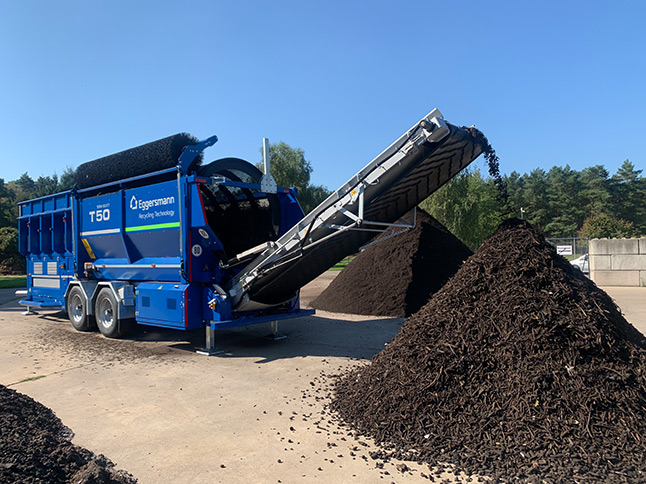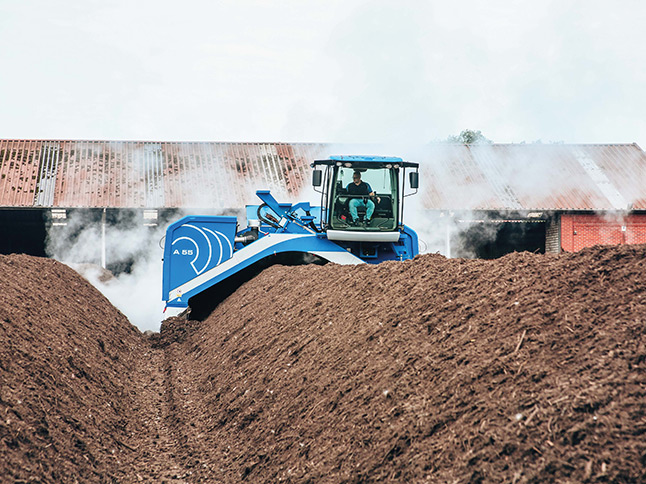Soil Remediation
Why is Soil Remediation Practised?
The contamination of soils with substances harmful to health and the environment has become a mass phenomenon worldwide since industrialisation. Depending on the type of contamination, these pollutants can escape as gases, be washed into the groundwater by rain or enter the food cycle through uptake by plants. Use of the affected areas is only possible to a limited extent or not at all. In addition, residents are endangered and the surrounding area may even become uninhabitable.
Now there are several possibilities:
- Treatment of Symptoms
If the risk is comparatively low, it is possible to treat the symptoms. For example, if the contaminated soil releases pollutants into the groundwater, the water can be treated by the municipalities through additional purification measures. Treatment of the cause of the problem does not take place. - Closure
Closure of the affected area is also possible. The extent depends on the severity and type of contamination. For example, on some soils only agricultural use is prohibited, on others even construction and habitation. This is a major problem, especially in conurbations. - Excavation and Disposal
If the affected area is needed for a specific use or if the environmental contamination it causes is unacceptable, excavating and disposing of the contaminated soil is one way to quickly make the area usable again. However, "disposal" in this case means only a literal relocation of the problem. The contaminated soil is merely stored in a specially secured place. - Soil Remediation
If the cause is to be tackled and the soil freed from contamination, the only option is soil remediation. There are various methods depending on the type of contamination.
Basically, a distinction is made between "on-site" and "off-site" treatment, both of which have in common that the soil must first be excavated. In the case of an "on-site" process, the soil is then treated on the spot; in the case of an "off-site" process, the soil is first transported to an appropriate facility. The possible soil remediation processes are sometimes very complex, but they are the only truly sustainable solution.
How Are Contaminated Soils Remediated?
Soil remediation aims to free contaminated soils from pollution. The best possible remediation procedure is determined by means of a laboratory soil analysis. The procedure to be chosen is, after all, highly dependent on the type of contamination. For example, in the case of contamination with harmful organic substances, thermal treatment of the soil in rotary kilns is possible. Other soils can even be remediated by using certain plant species that absorb and bind the pollutants through their roots (phytoremediation). Another alternative is chemical treatment of the contamination. Here, chemicals are used to induce a reaction with the pollutants, whereby they can be bound, neutralised or degraded. Biological treatment with microorganisms is also possible.
How Does Bioremediation Work?
Bioremediation is a biological treatment of contaminated soils by microorganisms. For example, there are "extremophilic" microorganisms that are particularly well adapted to certain hostile conditions and can break down pollutants.
If the necessary organisms are already present in the soil, they are promoted through biostimulation. In this process, nutrients are deliberately added and living conditions are created that favour the growth of the population of those microorganisms. If the desired microorganisms are not yet present in the soil, they can be introduced in a targeted manner. In this case, we speak of "inoculating the material"; the process itself is called "bioaugmentation".
How Can Eggersmann Mobile Machines Be Used to Remediate Soils?

Regardless of whether bioremediation, phytoremediation, chemical or thermal treatment is chosen, the soil must first be suitably prepared for the actual remediation process. This is because impurities such as stones or roots can hinder the respective process. In these cases, pre-treatment should be carried out with a shredder and a screening machine. Depending on the type of impurities to be expected, we have our TEUTON single-shaft and FORUS twin-shaft shredders as well as our TERRA SELECT drum and STAR SELECT star screen machines for this purpose.

BACKHUS Windrow Turners
Our BACKHUS windrow turners are suitable for both bioaugmentation and biostimulation in contaminated soils. They were originally designed to accelerate the composting process, whereby they also create the optimal conditions for the necessary microorganisms here. For example, they homogenise the material and provide sufficient oxygen. Furthermore, they can additionally moisten it via an irrigation system or provide it with targeted nutrients via the concentrate injection unit.
To protect the drivers from toxic vapours, it is possible to equip the cabins of our BACKHUS windrow turners with a particularly powerful air filter as well as an overpressure system, so calld protective ventilation unit. By generating overpressure, no more air can enter the cabin, but only escape.
Currently, our BACKHUS windrow turners are being actively used, for example, in eastern Germany for the biological treatment of material contaminated with paraffin. This involves the soil of a former Soviet military base where the fuel was not stored properly. Even with paraffin, the cleaning is carried out completely biologically through the use of microorganisms, for which our BACKHUS converters create the appropriate conditions.
Practical Example of Soil Remediation for Oil Pollution
Microorganisms are also used in the case of soil contamination by oils (petroleum or crude oil).
First, the excavated material should be suitably processed with a crusher and a screening machine so that it no longer contains any impurities. It can then be placed in a suitably secured location to form a windrow. If the microorganisms necessary for decomposition are not already contained in the excavated material, it should be inoculated with an appropriate culture. By regularly moving the windrow, optimal environmental conditions are created for the microorganisms, so that degradation can be reduced from over a year to up to two months.
During treatment, a strain of microorganisms is formed that is precisely adapted to the specific oil in the soil. Due to its adaptability, it proves to be particularly efficient during decomposition. After setting up a first windrow and starting the process, the following windrow should therefore be inoculated with approx. 20 litres of material from the first one in order to directly achieve a maximum process speed.
It is also interesting to note that the level of contamination is only an insignificant factor in the duration of the degradation process. Thus, between contamination of 10 or 40 %, there will be hardly any difference in the reduction to approx. 1 %.
"However, this last percent is always the most difficult, because the population of microorganisms now begins to die due to a lack of food. The process therefore takes the longest here, yet even this last percent will still be decomposed.